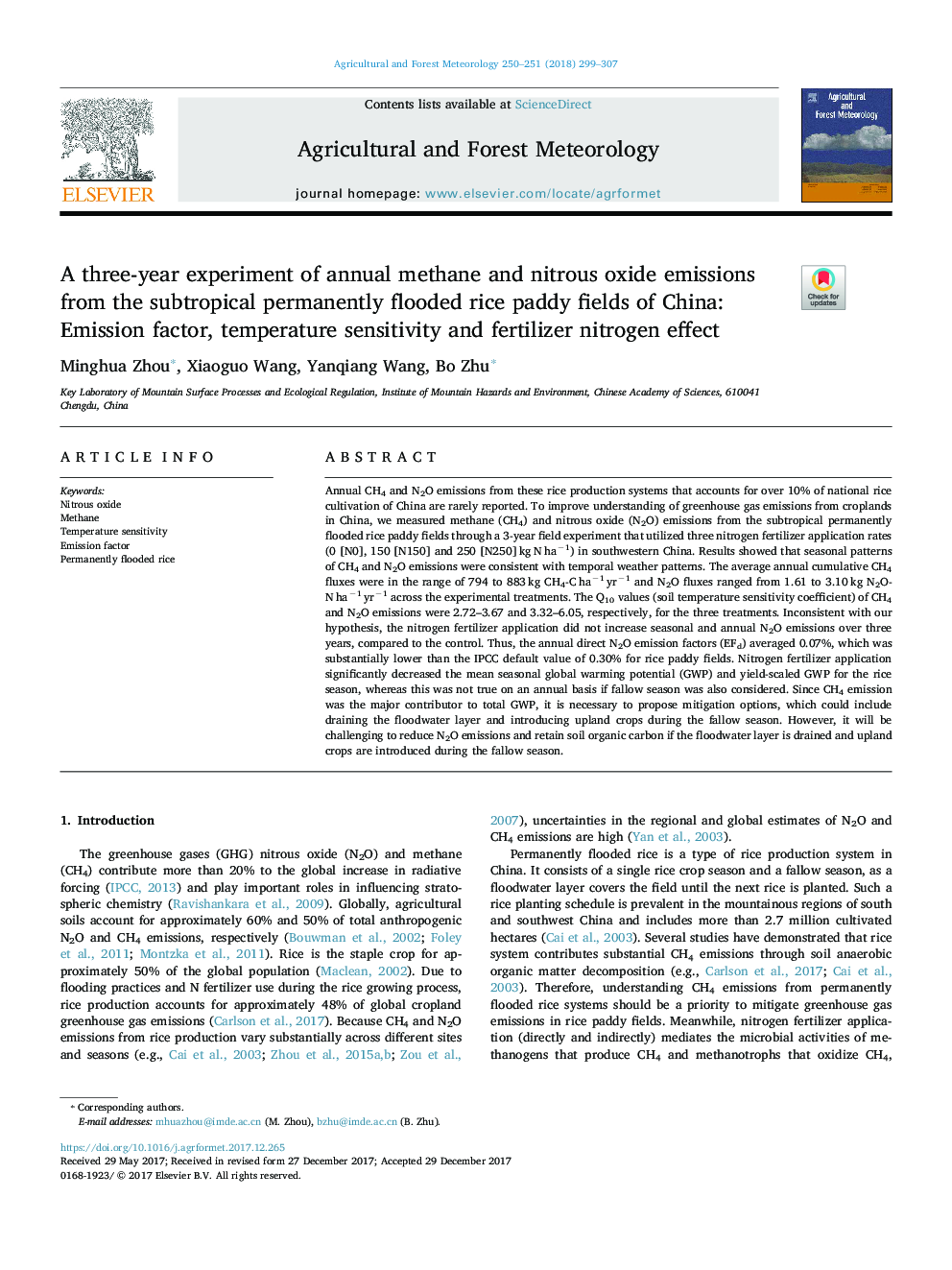| کد مقاله | کد نشریه | سال انتشار | مقاله انگلیسی | نسخه تمام متن |
|---|---|---|---|---|
| 6536820 | 1420851 | 2018 | 9 صفحه PDF | دانلود رایگان |
عنوان انگلیسی مقاله ISI
A three-year experiment of annual methane and nitrous oxide emissions from the subtropical permanently flooded rice paddy fields of China: Emission factor, temperature sensitivity and fertilizer nitrogen effect
ترجمه فارسی عنوان
آزمایش سه ساله انتشار متان و اکسید نیتروژن سالانه از مناطق چینی برنج سیب زمینی که به طور دائمی آب گرفتگی در چین رخ داده است: فاکتور انتشار، حساسیت درجه حرارت و اثر نیتروژن کود
دانلود مقاله + سفارش ترجمه
دانلود مقاله ISI انگلیسی
رایگان برای ایرانیان
کلمات کلیدی
اکسید نیتروژن، متان، حساسیت دما، فاکتور انتشار، برنج دائمی آب گرفتگی
موضوعات مرتبط
مهندسی و علوم پایه
علوم زمین و سیارات
علم هواشناسی
چکیده انگلیسی
Annual CH4 and N2O emissions from these rice production systems that accounts for over 10% of national rice cultivation of China are rarely reported. To improve understanding of greenhouse gas emissions from croplands in China, we measured methane (CH4) and nitrous oxide (N2O) emissions from the subtropical permanently flooded rice paddy fields through a 3-year field experiment that utilized three nitrogen fertilizer application rates (0 [N0], 150 [N150] and 250 [N250]â¯kgâ¯Nâ¯haâ1) in southwestern China. Results showed that seasonal patterns of CH4 and N2O emissions were consistent with temporal weather patterns. The average annual cumulative CH4 fluxes were in the range of 794 to 883â¯kg CH4-Câ¯haâ1â¯yrâ1 and N2O fluxes ranged from 1.61 to 3.10â¯kg N2O-Nâ¯haâ1â¯yrâ1 across the experimental treatments. The Q10 values (soil temperature sensitivity coefficient) of CH4 and N2O emissions were 2.72-3.67 and 3.32-6.05, respectively, for the three treatments. Inconsistent with our hypothesis, the nitrogen fertilizer application did not increase seasonal and annual N2O emissions over three years, compared to the control. Thus, the annual direct N2O emission factors (EFd) averaged 0.07%, which was substantially lower than the IPCC default value of 0.30% for rice paddy fields. Nitrogen fertilizer application significantly decreased the mean seasonal global warming potential (GWP) and yield-scaled GWP for the rice season, whereas this was not true on an annual basis if fallow season was also considered. Since CH4 emission was the major contributor to total GWP, it is necessary to propose mitigation options, which could include draining the floodwater layer and introducing upland crops during the fallow season. However, it will be challenging to reduce N2O emissions and retain soil organic carbon if the floodwater layer is drained and upland crops are introduced during the fallow season.
ناشر
Database: Elsevier - ScienceDirect (ساینس دایرکت)
Journal: Agricultural and Forest Meteorology - Volumes 250â251, 15 March 2018, Pages 299-307
Journal: Agricultural and Forest Meteorology - Volumes 250â251, 15 March 2018, Pages 299-307
نویسندگان
Minghua Zhou, Xiaoguo Wang, Yanqiang Wang, Bo Zhu,
